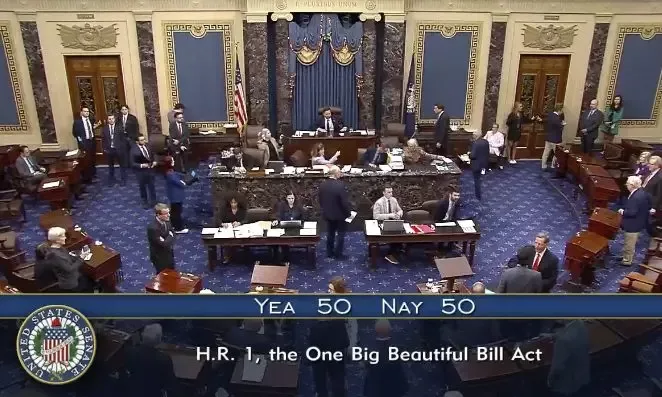On Maui and Moloka‘i, non-native axis deer continue to devastate private agricultural land and are pushing higher into forested lands.
Trees near the non-native forest near Molokaʻi airport are devoid of greenery. During recent heavy rain events, the lack of ground cover and healthy trees to slow rain penetration into the ground has created excessive runoff which makes it down to the ocean and onto near-shore reefs. After a big rain last month, waters along the south shore of Moloka‘i were chocolate brown, hundreds of feet seaward.
The overpopulation of axis deer is having its greatest impact on agricultural lands, some of which are adjacent to State Forest lands. “Axis deer are spreading further into the deep valleys and remote ridges, where they trample and eat plants. They spread invasive weeds, “ said DLNR Chair Suzanne Case in a press release. Case continued, “we need to protect our native forests because they capture rain and cloud moisture, replenishing freshwater streams and underground water sources. When hooved animals, all of which are not native to Hawai‘i but were introduced by foreigners, turn these ancient forests into bare ground, the steep mountainsides rapidly erode which deposit mud on beaches and coral reefs.”
During a recent helicopter flight above west Molokaʻi, James Espaniola, a Forestry and Wildlife Technician with the DLNR Division of Forestry and Wildlife (DOFAW) pointed out massive herds of deer. In a press release Espaniola explained, “Cattle ranchers have been the hardest hit,” “They do their part in rotating the use of pasture lands to prevent overgrazing by moving their cows around. Unfortunately, the deer remain, and they devour any living vegetation, which doesn’t allow for plant regeneration.”
One of the most effective ways to keep axis deer out of forests is through fencing. While fencing continues to be most effective, many of them were built decades ago and are only four-foot high, as they were originally built to keep pigs and goats out. Axis deer can easily jump them and are increasingly gaining access to those areas, so now DLNR and its partners are retrofitting existing fences to be eight-feet high.
In a press release Scott Fretz, the DOFAW Maui Branch Manager remarked, “Protection of the state’s native ecosystems and watersheds is our core mission and we currently have more than 100,000 acres of those lands fenced with effective deer control in place. However, that still leaves a lot of lands outside our management areas in need of better control. This is especially true for lower elevation areas where deer impact communities and agriculture and cause erosion that fouls marine habitats. Solving that bigger problem is going to take broad collaboration with stakeholders. The renewed efforts of the Maui Axis Deer Task Force led by Maui County Council Member Yuki Lei Sugimura are a very positive step in that direction.”
Below are the detailed steps the DLNR/DOFAW are taking to combat the axis deer issue:
- DOFAW staff is participating in the Maui Axis Deer Task Force. DOFAW staff is working to improve control through population-based spatial planning and increasing opportunities for deer harvest.
- Additional funding for deer control from state and county sources is being used for fencing, harvest, and watershed protection.
- Wildlife control permits and other hunting efforts are resulting in more than 7,000 axis deer being harvested on Maui annually. The task force is looking at expanding on this success and the introduction of methods to increase control in new areas.
- DOFAW staff is working to establish additional public hunting agreements with private landowners.
- DOFAW staff continues to maintain and build fencing and control deer on significant watershed lands that are vital for clean water, natural resource protection, endangered species, agriculture, and the economy.
For hunters, there are currently no limits on how many axis deer they can take. DOFAW is encouraging hunters not only to focus on bagging trophy bucks, but to help cull doe out of the large herds.
Photo credit: DLNR




